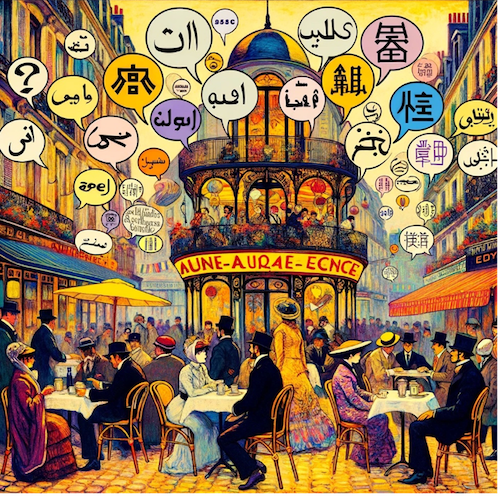Voices of Inclusion: The Art of Translating Audio Descriptions Across Languages

By Maria Victoria Diaz, PhD
When looking to make multilingual media content universally accessible, translating audio descriptions (AD) emerges as a promising yet challenging endeavor. The process involves intricate considerations including managing soundtrack variations and ensuring idiomatic correctness along with cultural relevance. Let's delve deeper into these challenges and explore the path toward effective multilingual AD.
Clarifying the Soundtrack Requirement: A fundamental step in creating ADs in multiple languages is ensuring the availability of the soundtrack in those languages. While it's technically feasible to craft AD in different languages from a script in one language, the essence of AD—enhancing understanding and enjoyment of media—gets diluted if the audience cannot grasp the spoken dialogues.
Once the soundtrack has been dubbed into different languages, the need to narrow the following considerations to the creation of an AD track in multiple languages arises.Translating and idiomatically adapting an AD track from one language to another is not just a linguistic exercise but a cultural and technical recalibration. These factors underscore the complexity of this process:
- Temporal and Spatial Constraints: The available blank spaces within a soundtrack for inserting ADs can vary significantly across languages due to expression length and timing differences. This requires careful adjustment to ensure the AD fits neatly without overlapping with crucial audio elements.
- Different variables in dialogues when dubbed: During the dubbing process, references to visual details may have been incorporated or subtracted from the dialogues or narrations resulting in redundancy or lack of details when translating.
- Idiomatic and Cultural Nuances: The adaptation process must navigate idiomatic expressions and cultural references, ensuring they are adapted or explained in a way that properly addresses the target audience is essential. This might involve substituting a culturally specific metaphor with a more universally understood one, or a similar one in the new language without losing the original's essence.
A robust quality control (QC) process is imperative to tailor the AD effectively for each language and address each factor mentioned above. This not only ensures linguistic accuracy but also polishes the timing, tone, and cultural sensitivity of the descriptions. QC guarantees the translated ADs maintain their intended impact, enhancing the media experience for a global audience.
The translation of audio descriptions into multiple languages brings benefits in expanding media accessibility. By addressing the challenges associated with soundtrack differences, idiomatic expressions, and cultural nuances, creators can ensure that ADs serve their purpose across linguistic boundaries. This endeavor not only amplifies the impact of media content but also fosters a more inclusive and understanding global community. As we move forward, the collaborative efforts of linguists, cultural consultants, and accessibility experts will be crucial in navigating these challenges and unlocking the full potential of multilingual audio descriptions.
